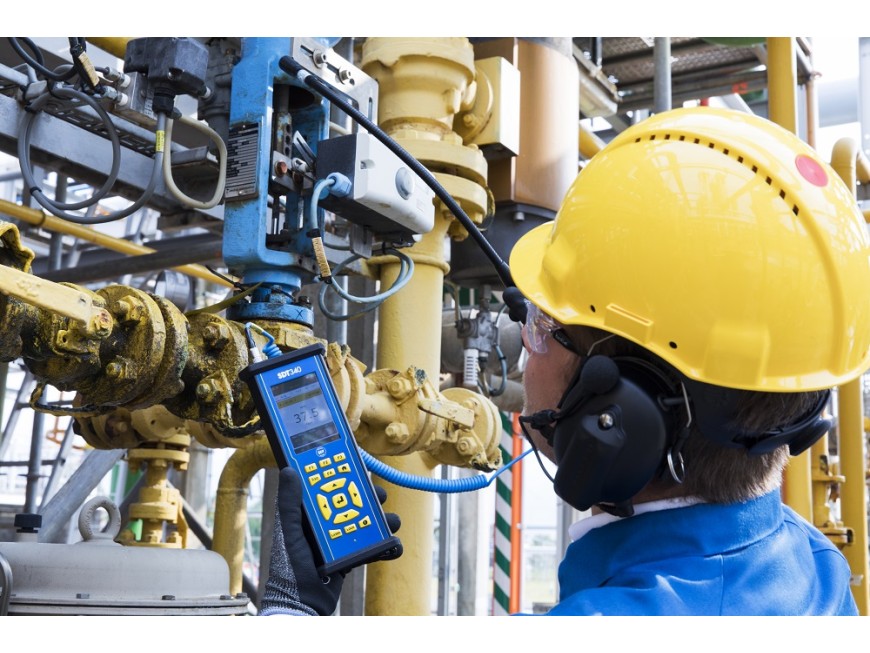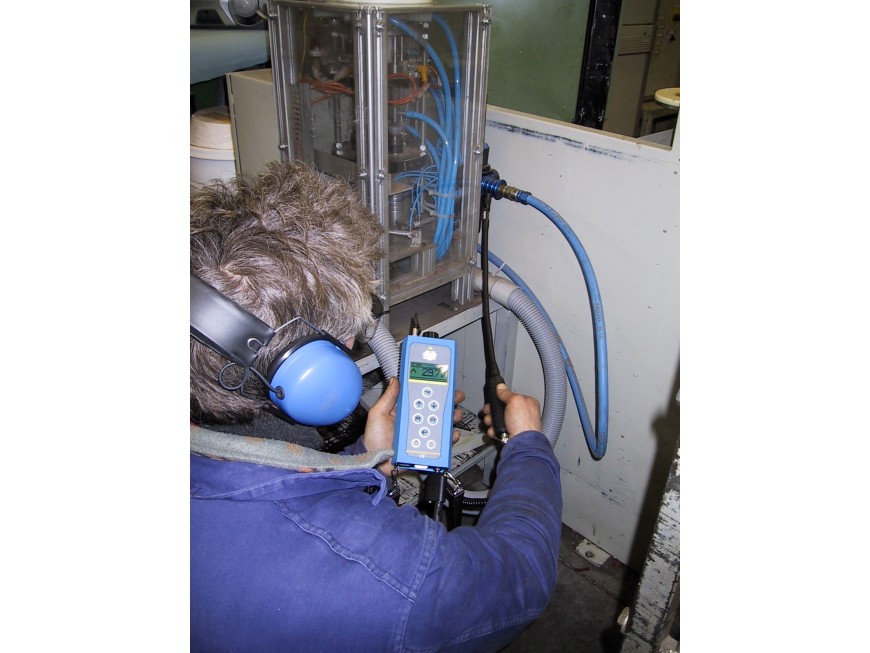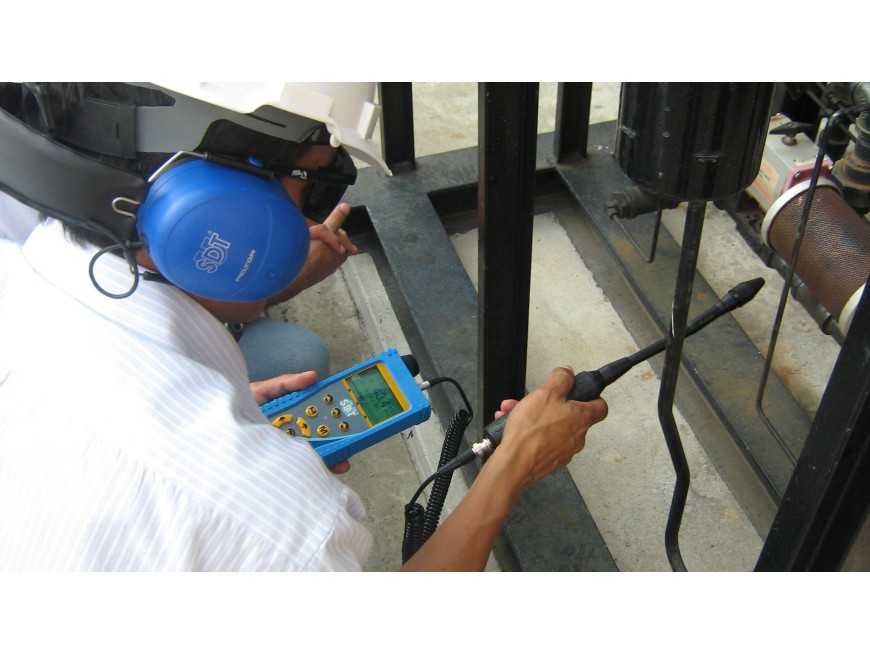Why use Ultrasound to detect leaks?
Ultrasound is the best tool for detecting friction, impacting or turbulence.
As compressed air seeps through a leak, it produces turbulent flow, along with a high frequency hissing noise. This hissing, while audible in a quiet setting, is nearly impossible to hear over the roar of production. Other leak detection methods such as the soap bubble test are messy, difficult and time consuming. On the contrary, ultrasound provides an easier and effective way of detecting air leaks.
How to Find and Fix Leaks using your Ultrasound Device
Air leaks are easily found, tagged and fixed with regularly performed leak surveys.
Air leaks happen at the joints, elbows, and end fittings of the piping. The process is simple, scan the piping and end fittings with an ultrasonic leak detector in a sweeping motion. Turbulence created by a leak is localized to the leak point. When you discover a spike in dB’s, inspect the area until you find where the dB’s peak. That is your leak point. As you identify leaks, tag them for repair when your maintenance schedule allows it.
Maintaining a regular leak survey schedule is crucial to the health of your factory, reducing energy costs and the effectiveness of your compressed air system.
Ultrasound compressed air leak detection offers several benefits for identifying and addressing leaks in compressed air systems. Here are some of the key advantages:
Efficient Leak Detection:
Ultrasound technology allows for quick and efficient detection of compressed air leaks. Ultrasound sensors can pinpoint the high-frequency sounds produced by air leaks, even in noisy industrial environments. This enables maintenance teams to identify and locate leaks promptly, saving time and effort compared to traditional leak detection methods.
Cost Savings:
Compressed air leaks are a common source of energy waste in industrial settings. By detecting and repairing leaks using ultrasound inspection, significant energy savings can be achieved. Unaddressed leaks lead to increased energy consumption, resulting in higher utility costs. Ultrasound leak detection helps reduce unnecessary energy expenses and improve overall system efficiency.
Enhanced System Performance:
Addressing compressed air leaks improves the performance of the entire compressed air system. By minimizing leaks, the system can maintain the required air pressure, ensuring proper operation of pneumatic equipment and tools. This leads to enhanced productivity, reduced downtime, and improved overall production efficiency.
Preventive Maintenance:
Ultrasound leak detection enables proactive maintenance practices. By regularly inspecting and repairing compressed air leaks, potential equipment failures and costly breakdowns can be prevented. Proactive maintenance also helps extend the lifespan of compressed air system components and reduces the need for emergency repairs.
Improved Safety:
Compressed air leaks can pose safety hazards in the workplace. Leaking air can cause noise pollution, trip hazards, or even damage to nearby equipment. By promptly identifying and repairing leaks, ultrasound inspection helps create a safer working environment, minimizing risks associated with compressed air systems.
Environmental Benefits:
Energy wasted due to compressed air leaks contributes to unnecessary carbon emissions. By detecting and repairing leaks, ultrasound inspection helps reduce greenhouse gas emissions, contributing to environmental sustainability and corporate responsibility efforts.
Easy Integration:
Ultrasound leak detection can be easily integrated into existing maintenance routines. Ultrasound devices are portable, user-friendly, and require minimal training to operate effectively. This makes it feasible to incorporate regular leak detection activities into maintenance schedules without disrupting ongoing operations.
Documentation and Reporting:
Ultrasound leak detection devices often have features that allow for data logging and reporting. This helps in maintaining a record of identified leaks, their locations, and repair actions taken. Documentation facilitates tracking and monitoring the effectiveness of leak detection efforts and supports compliance with regulatory requirements.
Ultrasound compressed air leak detection provides a range of benefits, including efficient leak detection, cost savings through energy efficiency, improved system performance, preventive maintenance, enhanced safety, environmental benefits, easy integration into maintenance routines, and reliable documentation. By leveraging ultrasound technology, organizations can optimize their compressed air systems, reduce energy waste, and achieve operational and environmental sustainability.






